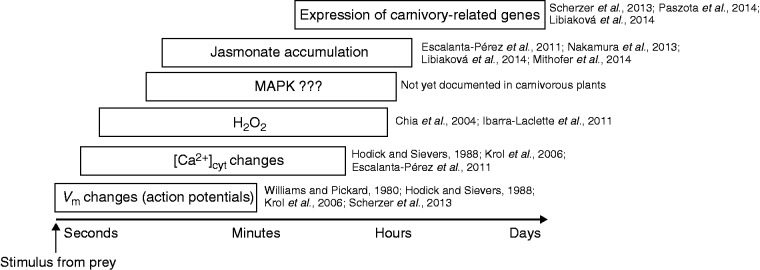Fig. 5.
Probable timed hierarchy of consecutive events detectable in carnivorous plants with the active trapping mechanism in response to prey capture adopted from plant defence mechanisms (Maffei et al., 2007). The earliest events measurable are action potentials generated by mechanical stimuli (Williams and Pickard, 1980; Hodick and Sievers, 1988; Krol et al., 2006; Escalante-Pérez et al., 2011) or chemical stimuli from prey (Scherzer et al., 2013), which trigger a cytosolic calcium increase (Escalante-Pérez et al., 2011) and generation of H2O2 (Chia et al., 2004; Ibarra-Laclette et al., 2011). Increased cytosolic Ca2+ is probably sensed by binding to calmodulin protein (CaM) or other calcium-sensing proteins, which can interact with mitogen-activated protein kinases (MAPKs; this part of the signaling pathway has not yet been documented in carnivorous plants). MAPKs regulate biosynthesis of jasmonates which trigger the expression of carnivory-related genes (Scherzer et al., 2013; Nakamura et al., 2013; Libiaková et al., 2014; Mithöfer et al., 2014; Paszota et al., 2014).

